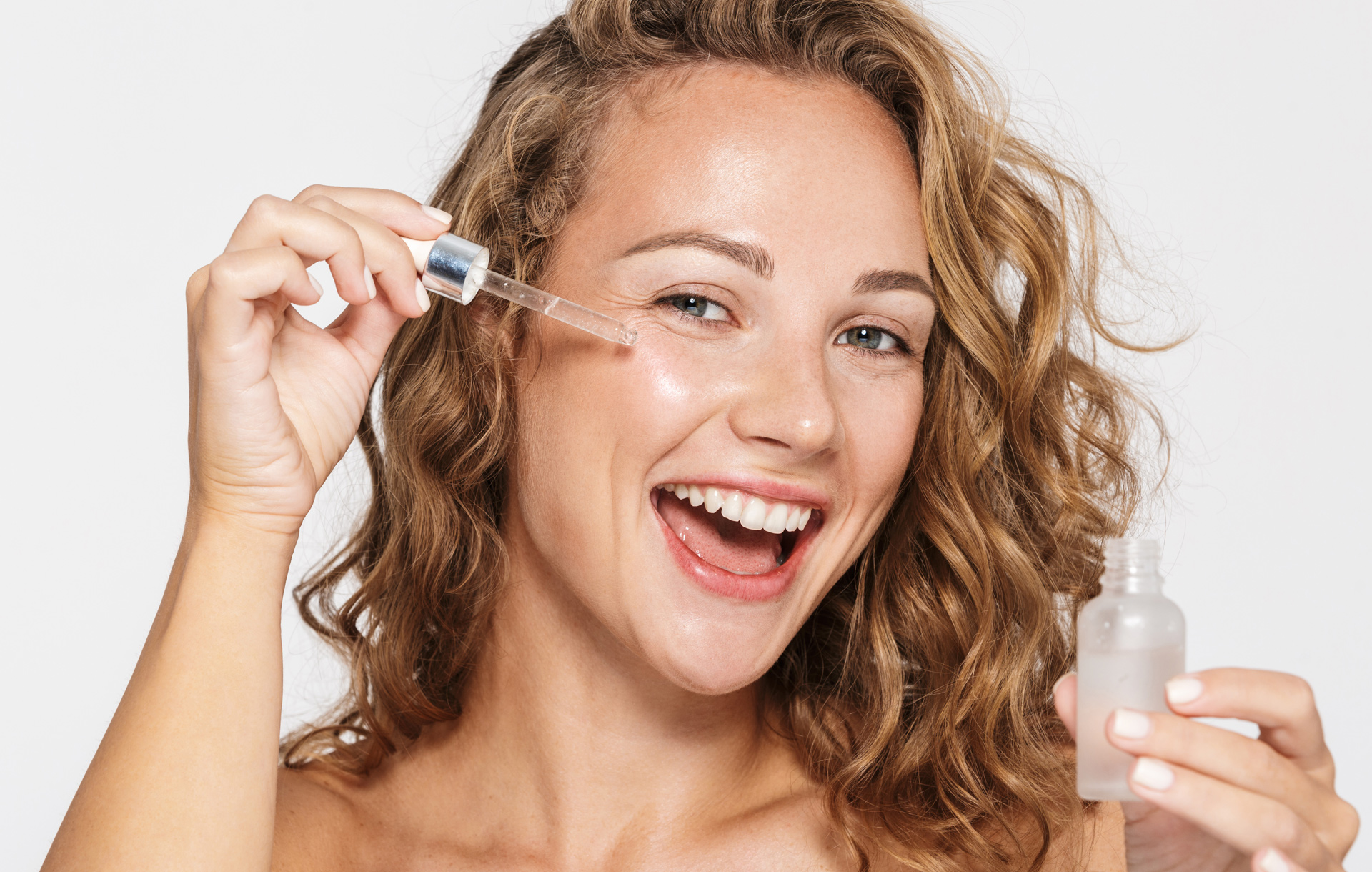All about this powerhouse product
Serums promise to deliver high concentrations of skin-loving ingredients in just a few drops. The skin grips onto them and absorbs them quickly, giving an instant boost of hydration. Over time, serums work to target concerns like wrinkles, dark spots, discoloration, and hydration, working alongside skincare staples like cleansers and moisturizers.
With so many promising serums on the market, it can be difficult to find one that tackles specific skin concerns (as all of them sound so good!). That’s why, in addition to getting into more detail about serums, we’re here to guide you on how to choose the right serum for you and your skin goals. If you haven’t used a serum yet, you’re missing out! Here is how you can jump in and make your way toward healthy, beautiful skin.
[ihc-hide-content ihc_mb_type=”show” ihc_mb_who=”2,4,6,7,5″ ihc_mb_template=”3″ ]
What’s So Great About
Face Serums?
We are bombarded with advertisements listing the benefits of skin-enhancing products. From moisturizers and masks to eye creams and concentrates, it can be hard to find products to address multiple issues and keep our skin looking its best and brightest.
While serums are not a one-and-done product, they fit in with most skin care routines, giving the skin a healthy dose of vitamins, minerals, and more. Unlike moisturizers, serums feature a higher concentration of active ingredients, usually compressed into oils or gels that are easily absorbed into the skin. With just a few drops, serums can work to address a number of issues, some of them highly specific, and others offering a broad-range approach to target multiple concerns.
Serum Delivery Systems:
Why They Matter
Skin care products can have A-list ingredients but fail to do their job effectively. That’s because their delivery is all wrong and doesn’t work with the skin’s chemistry and structure to help products penetrate deeper layers. Wrapped up in the wrong delivery system, serums can get trapped in the mixture of dead skin cells, sebum, and keratinized proteins that make up our skin’s defensive barrier. Some key delivery systems to know about include:
1. Intercellular – This delivery system works by going deeper into cells via keratinocytes – the skin’s keratin-producing cells.
2. Transcellular – Instead of going directly to cells, these go from cell to cell, passing on active ingredients between them.
3. Transappendageal – These target different glands of the skin, including sweat and oil glands, in order to seep deeper into the skin.
The skin is a smart organ that is in constant interaction with the world around it. Most serums take advantage of skin’s interplay with ingredients that stimulate delivery systems. These include:
Concentration
The concentration of active ingredients is a big deal when it comes to delivery. The skin is more likely to absorb higher concentrations of ingredients – allowing them to penetrate deep into the skin and repair from the inside out.
pH
Skin’s ideal pH level is neutral (around seven) and is constantly working to maintain its sweet spot. When the skin’s pH drops, it begins to absorb liquids more readily, attempting to equilibrate. This is why treatments like chemical peels have a good rep, helping drop the pH and allowing more skin-loving ingredients to penetrate and absorb for better results.
Molecular Composition
Without getting too technical, ingredients have a molecular mass (thanks, high school chemistry!). If ingredients have molecules that are too large, they are not able to penetrate the skin and wind up laying on the surface. When ingredients build up on the skin’s surface, irritations and breakouts can occur, which is the opposite of what most are trying to achieve. Serums tend to feature smaller molecules that can bypass blockades and make their way into deeper layers of the skin.
Finding Your Perfect Match: Tips for Choosing the Right Serum
On the hunt for the perfect serum? Here are a few tips for finding the best serum for your top skin concerns.
Define Your “Why”
Whether it’s a boost of hydration, plumping up the skin, smoothing wrinkles, or reducing exposure to toxins, it helps to define your “why.” Think of what you would like to focus on – as this will help you narrow down your search for the perfect skin serum.
Consider Your Budget
After identifying your concern(s), the hunt begins. You’ll notice the market is flooded with products at all price points, ranging from budget to high-end. More expensive isn’t always better, so consider your budget and start by comparing active ingredients and concentrations.
Two is Company, Three’s a Crowd
While you may find serums that promise the world, adding too much to the skin can lessen the effect of some serums. While you can use two to target broad-range issues (maybe consider one for morning and another for nighttime) you shouldn’t overdo it with serums. Instead, choose one or two, strategically integrating them into your current skincare routine to help your skin become it’s best, tightest, and brightest!
[/ihc-hide-content]












